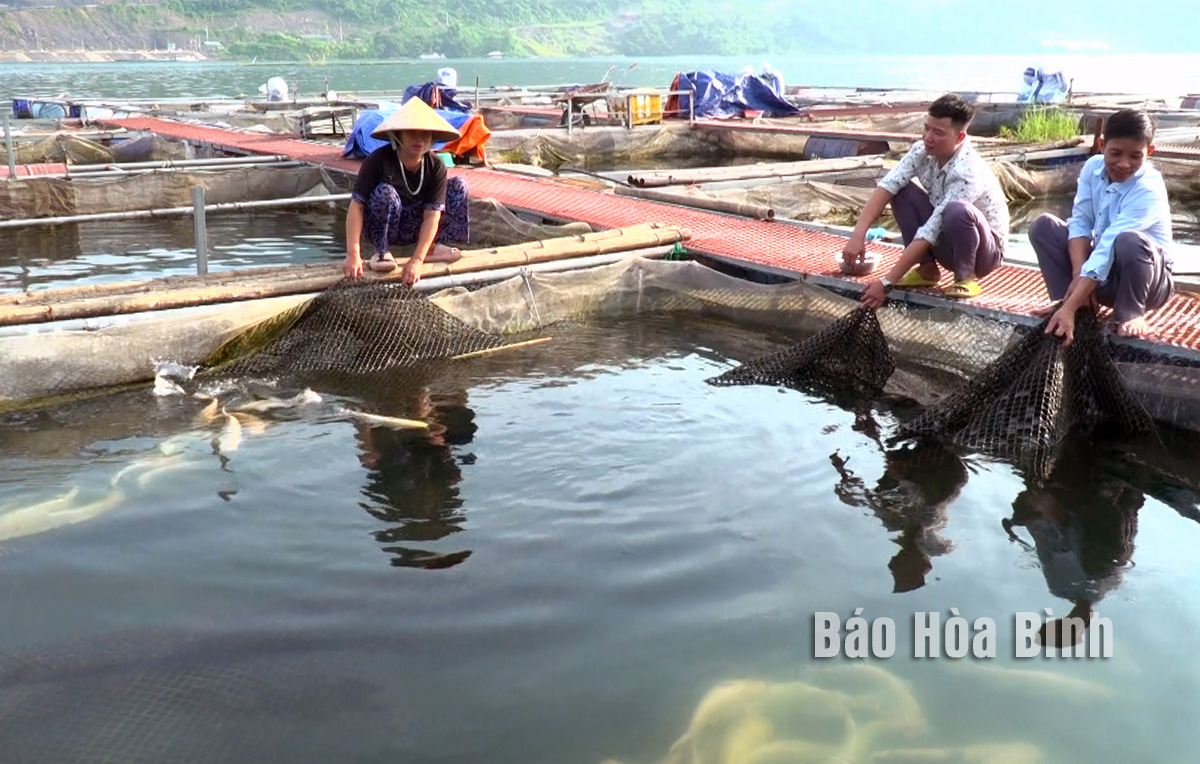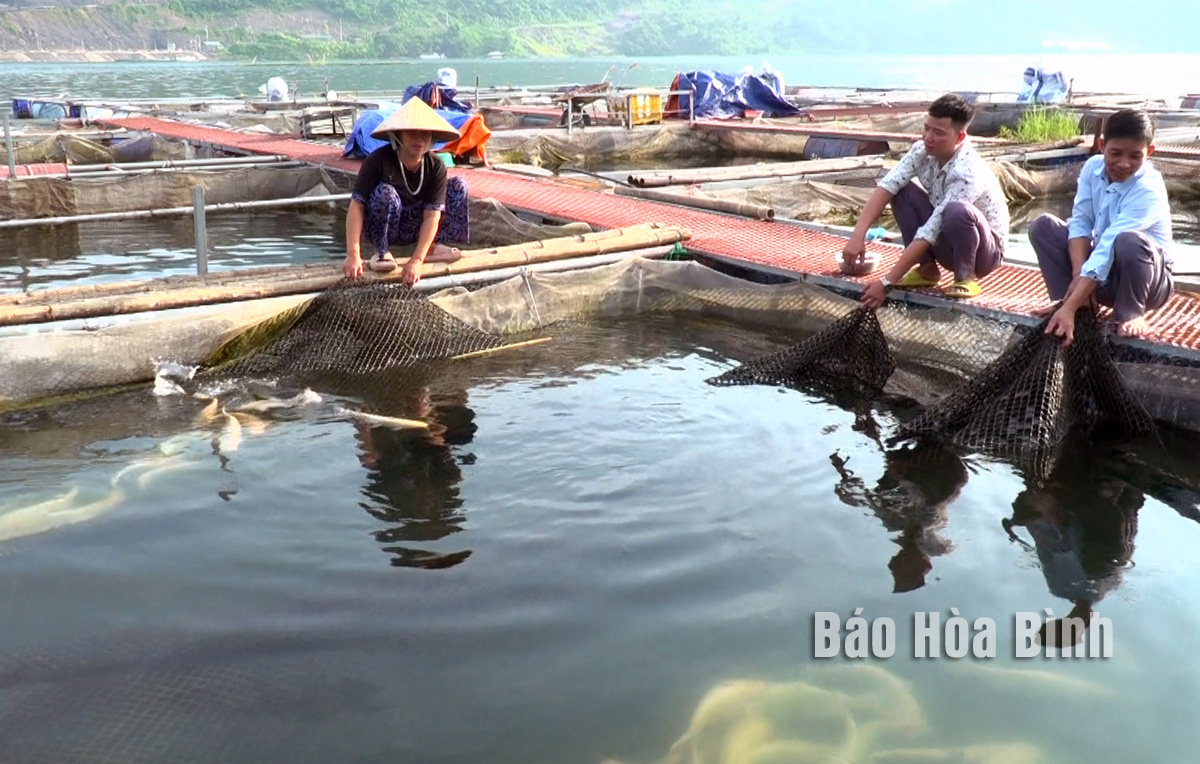
Suoi Hoa commune in Tan Lac district, located next to the Hoa Binh lake bed, boasts favourable conditions to branch out the caged-fish farming model, helping build local caged-fish brand, better residents’ income, and improve local livelihoods.
Bui Thi Thoa, a resident in Suoi Hoa commune, Tan Lac district, has studied and applied advanced technology into her caged-fish farming model.
Stable market in the end of 2023 help secured farmers in Ngoi hamlet a bumper fish crop. Bui Thi Thoa, a local resident who bred various kinds of fish in 30 cages, said her fish was sold at higher prices than in the previous crop.
Last year, Thoa gained some 150 million VND (nearly 6,200 USD) from selling 5-6 tonnes of fish. She said she has spent all of the profit on purchasing fries and investing in a cage system, and attended training classes on technical transfer to prevent diseases, adding the move aims at developing the caged-fish model. Besides, her family has worked with hotels and restaurants to ensure stable market for the fish.
Suoi Hoa commune is now home to nearly three hectares of aquaculture areas with more than 600 fish cages. Currently, local farmers are focusing resources to develop their cage system, while popularising their products on social networks such as Facebook and Zalo to access more consumers. Total aquaculture production in the commune in 2023 was estimated at 55 tonnes.
With a view to supporting and developing the aquaculture sector, local authorities have urged farmers to capitalise on the commune’s potential and advantages to branch out caged fish farming. Along with joining hands with relevant authorities to organise training courses, they have created favourable conditions for local people to get access to consessional loans from the district’s bank for social policies.
However, challenges remain on the horizon for the commune to develop brand for its caged fish, including small-scale production, poor linkage among households engaged in the caged farming model, traditional farming habits, among others.
According to Vice Chairman of the communal People’s Committee Dinh Van Buong, the caged fish farming has shown efficiency, making contributions to sustainable poverty reduction.
However, to turn caged fish farming into an economic spearhead, authorities at all levels should pay further attention to creating favourable conditions for farmers to stabilise production.
They should bring farmers into cooperatives to strengthen linkage and develop value chain for their fish, he said, adding it is necessary to improve product quality, enhance popularisation work, and expand markets for the products.
According to data from the Hoa Binh Provincial Party Committee, the industrial production index for the first six months of 2025 is estimated to have increased by 20% compared to the same period last year. This marks the highest year-on-year growth rate for this period since 2020.
In the first six months of 2025, Hoa Binh province’s export turnover was estimated at 1.145 billion USD, marking an 18.11% increase compared to the same period in 2024. Import turnover was estimated at $ 804 million, a 17.15% increase, which helped the province maintain a positive trade balance.
The lives of the ethnic minority farmers in Tan Lac district have gradually improved thanks to the new directions in agricultural production. This is a testament to the collective strength fostered through the professional associations and groups implemented by various levels of the district’s Farmers’ Union.
With the motto the "product quality comes first,” after nearly one year of establishment and operation, Muong village’s Clean Food Agricultural and Commercial Cooperative, located in Cau Hamlet, Hung Son Commune (Kim Boi district), has launched reputable, high-quality agricultural products to the market that are well-received by consumers. The products such as Muong village’s pork sausage, salt-cured chicken, and salt-cured pork hocks have gradually carved out a place in the market and they are on the path to obtaining the OCOP certification.
In the past, the phrase "bumper harvest, rock-bottom prices" was a familiar refrain for Vietnamese farmers engaged in fragmented, small-scale agriculture. But today, a new spirit is emerging across rural areas of Hoa Binh province - one of collaboration, organisation, and collective economic models that provide a stable foundation for production.
Maintaining growing area codes and packing facility codes in accordance with regulations is a mandatory requirement for agricultural products to be eligible for export. Recently, the Department of Agriculture and Environment of Hoa Binh province has intensified technical supervision of designated farming areas and packing facilities to safeguard the "green passport" that enables its products to access international markets.



